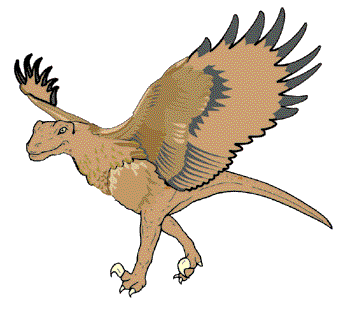We've all seen the news. With great fanfare, a complete dinosaur-bird transitional form has been revealed. Consisting of a birdlike body and dinosaurlike tail, it has now been asserted that finally, we have found the fossil of a missing link and proof that dinosaurs evolved into birds.
The main media splash came in October of 1999 with a gripping article following in the November issue of National Geographic. It involved a fossil smuggled out of China, sold to a private collector, presented at technical meetings, and accepted with little question. There were a few scholars who voiced concern, but their comments were trampled in the rush to accept this new "proof" of evolution.
But then, in mid-January 2000 came the news that the fossil was most likely a fraud, having been artfully pieced together from fossils of a true bird and a true dinosaur. For outsiders, the finger-pointing and backtracking has been both humorous and traumatic, as is well documented in the attached, "must-read," Impact article by Dr. Steve Austin.
What lesson can be learned from this episode? And what should our response be when faced with similar claims? What was ICR's initial response?
When first confronted with sensational media claims (with scanty actual data), the ICR scientists recommend a "wait and see" attitude. Often, extraordinary public claims are retracted within a year or so, as careful investigation ensues. (Remember the meteorite from Mars with tiny fossils? Science disproved that within months, after evolution was successfully promoted in the media.) Don't fall prey to claims that are "too good to be true." They probably aren't and time will tell.
Here's the point. Dinosaurs didn't evolve into birds, and once all the facts are known, it will be clear. Sometimes we just have to wait.
 |
| Please forgive this humorous clipart illustration of a dino-bird. After days of negotiation, National Geographic refused to allow ICR to print their standard pictures of the actual fossil and their sculpture of a reconstruction of Archaeoraptor, even though the photos have been distributed widely and have appeared in scores of publications. The clipart (as well as National Geographic's original sculpture which can be seen along with the compromised fossil slab at www.nationalgeographic.com/events/99/fea |













